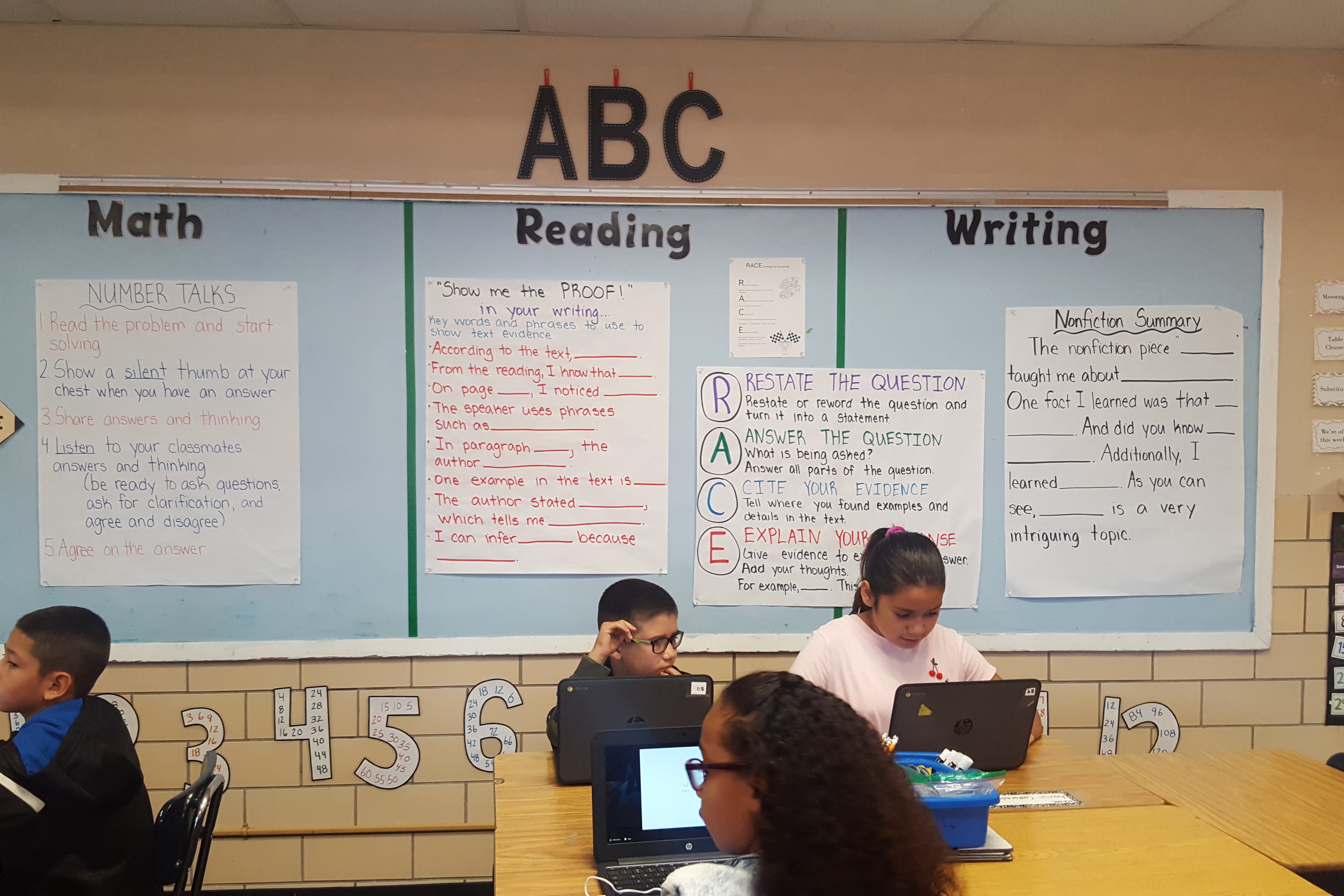The Adams 14 school district won state approval Wednesday to use its own improvement plans at Central Elementary. The approval avoids more drastic options like closure or charter conversion even as the state has ordered the entire district to reorganize.
Members of the State Board of Education voted 6-1 in favor of the district’s plan. Central Elementary had ended up on the state watchlist, separately from the district. The state board heard the initial proposal from the district in April, and asked leaders to flesh it out with more detail.
Board member Steve Durham cast the only no vote Wednesday, but other members joined him in expressing concern about whether the plan would be implemented well and whether it has enough academic focus.
Central enrolls 432 students including more than half who are identified as English learners. While the school has received seven years of low state ratings, in the most recent ratings in 2019, the school fell only 1.4 percentage points away from a higher rank.
But state officials worried early this school year that Central’s progress may have stalled.
Central’s plan will make it the first school in the state to incorporate three paths for improvement: autonomy through innovation status, a community schools model, and partial management by an outside group.
TNTP, the partial manager the district has selected, will oversee the school’s transition to a community school model that will offer supportive services such as counseling or health care for students. The plan qualifies as an improvement plan by getting innovation status, which allows schools to request waivers from state laws, district policies, and labor contracts.
The plan calls for TNTP to focus on academics and guidance for teachers. The district and TNTP also will plan services to help families eliminate barriers to learning or attending school. The services could include things like after-school care, mental health services, and a health clinic.
In opposing the plan, Durham expressed concern that it did not seek enough waivers for teacher hiring or for different pay based on performance.
Many innovation proposals request waivers that grant school-level officials sole authority to hire or fire staff and set pay. Principals or other school teams might hire teachers who don’t meet state requirements but have skills that align with the school’s specific educational plans. And principals generally get more authority under innovation status.
The district’s plan for Central asks for waivers including to add 20 minutes to the school day, and to add five days to the teacher work year, to train before the school year starts.
The school must continue to pay teachers according to the district’s salary schedule but may offer incentives to retain teachers.
The plan allows Central some flexibility around recruitment, but the district and TNTP will still make hiring decisions.
Superintendent Karla Loria said that the school staff already have had to reapply for their positions, and mentioned that with incentives, teachers at Central may earn up to $13,000 above what they might earn at other district schools.
Board member Lisa Escárcega, who said she’s had experience with crafting innovation plans when she worked in school districts, said she has seen successful innovation plans with fewer waivers.
Still, she told district leaders, she hoped they would continue to explore additional waivers.
State board member Joyce Rankin said she was concerned that 20 additional minutes per day was not a lot, and that the plan lacked urgency in its academic provisions. In particular, she worried that only 51% of the required teachers at the school have completed literacy training requirements so far.
“If you are really serious, they’re already trained,” Rankin said. “The urgency is with the process. It’s with what we have to do to get by.”
Despite her reservations, Rankin said she would vote to approve the innovation proposal because she didn’t think closing the school would be a good option.
“I wish we had other options,” she said.
Last month, the state board came down harder on the district as a whole, and ordered it to reorganize as well as hire a new external manager. The district hasn’t begun reorganizing, which likely will take a long time. Several school districts and parents will have to join a committee and draft a plan that could include changing boundaries or governance of parts of the district.
Yesenia Robles is a reporter for Chalkbeat Colorado covering K-12 school districts and multilingual education. Contact Yesenia at yrobles@chalkbeat.org.







